Butte with Ruins in River Canyon
Verde River Canyon, Prescott National Forest, Arizona, 1998 | 55.5 x 65.5 x 1.75 | $2,800
An isolated butte with ruins on the summit stands in the Verde River Canyon northwest of Cottonwood in central Arizona. This view is to the west at sunrise, with the Chino Valley visible along the horizon.
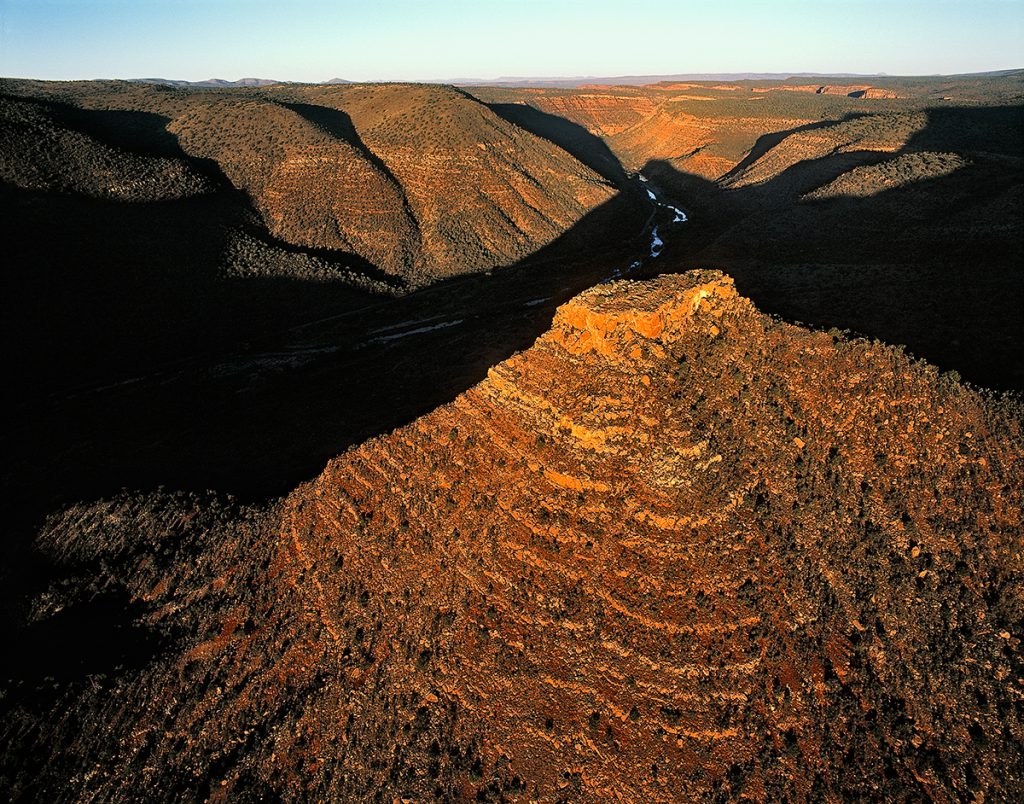
The ancient landscape is a lesson about change, and the inevitability of change, and the humility with which we humans should undertake to do anything—especially here in the Southwest.
—Leslie Marmon Silko
Laguna tribal member and novelist
Erosion and Cornfields
Beautiful Valley, Navajo Nation, Arizona, 1993 | 55.5 x 65.5 x 1.75 | $2,800
An isolated field, fenced to protect it from livestock grazing on the open range, lies above an eroded slope in Beautiful Valley south of Chinle, Navajo Nation, Arizona. This view is to the northeast, with Pillow Mountain on the right horizon.
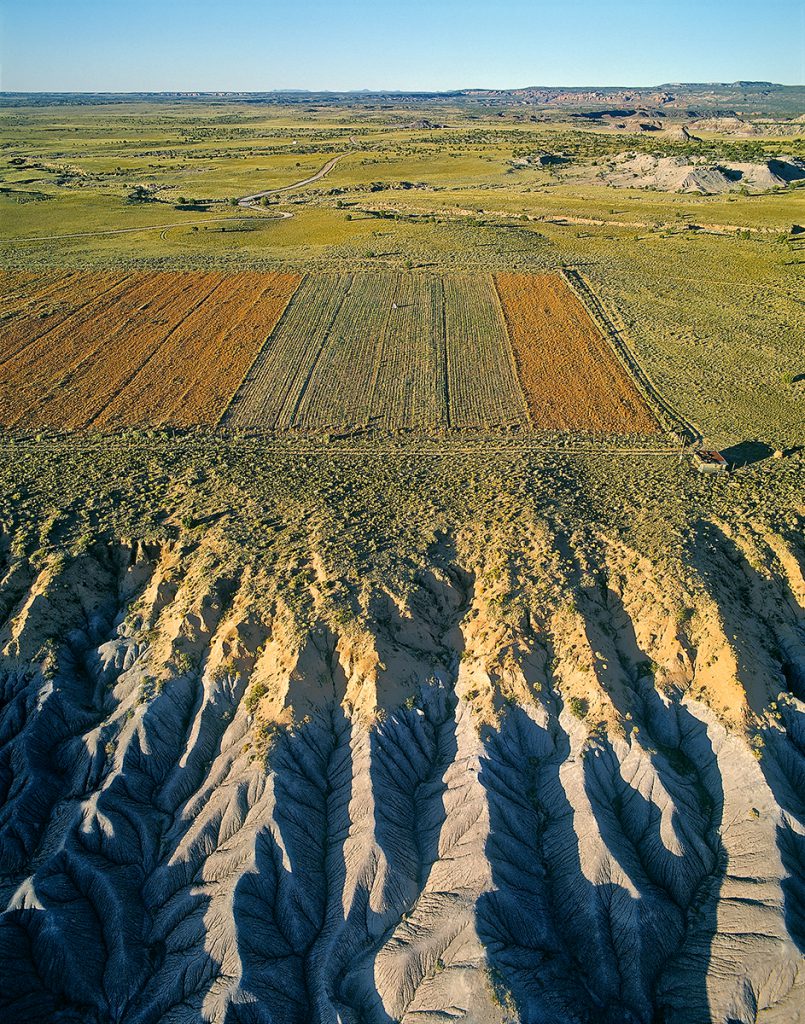
I feel modern civilization would be so different without Native American contributions, like corn and rubber. Even if we’re not biologically connected to American Indians in the near term, western society is indebted to those people. And we can have an appreciation even if we’re not their descendants.
—Patricia Cook, archaeologist
Desert Archaeology, Inc.
Native American Church Meeting
Lukachukai, Navajo Nation, Arizona, 1992 | 30.5 x 39 x 0.875 | $975
Native American Church teepee occupies a packed-earth pedestal surrounded by the parked vehicles of church members gathered inside, where smoke from a ceremonial fire has darkened the peak of the teepee.
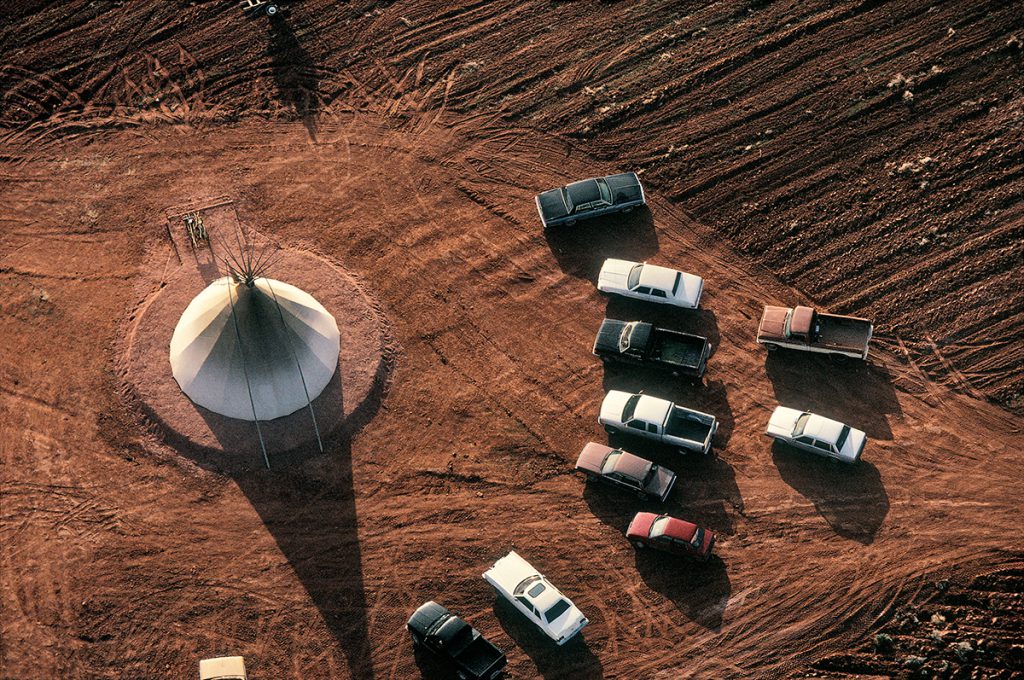
Parade with Crowd
Navajo Nation Fair, Window Rock, Arizona, 1991 | 30.5 x 39 x 0.875 | $975
The Saturday morning parade of the Navajo Nation Fair proceeds down State Highway 264 through the town of Window Rock. This aerial view is to the east from the Fairgrounds area.
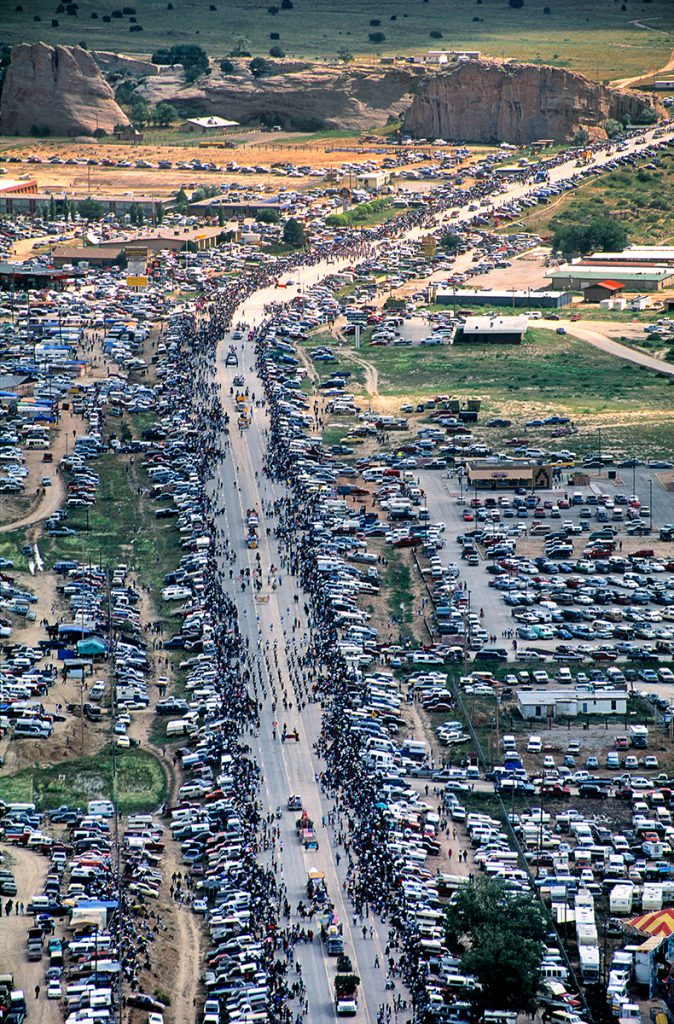
Powwow Dancers with Audience
Navajo Nation Fair, Window Rock, Arizona, 1995 | 45 x 53.5 x 1.75 | $1,950
Indian dancers whirl in the center of the powwow arena at the Navajo Nation Fair, the world’s largest Native American fair.
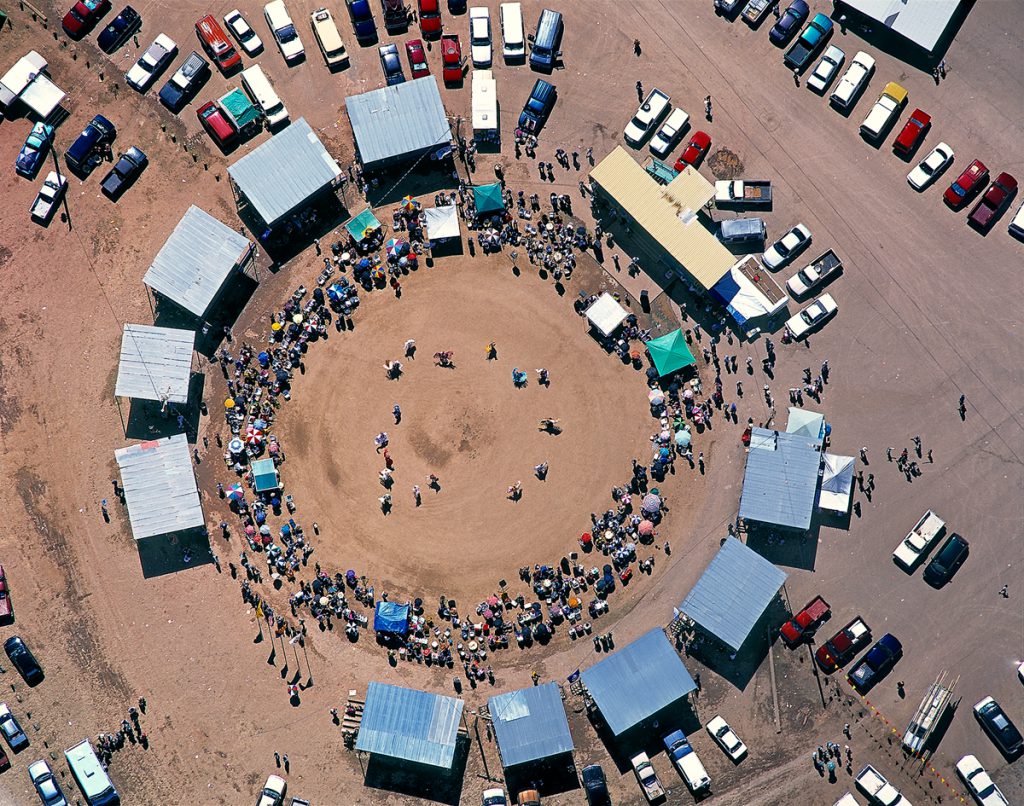
Pueblo Ruin on Boulder
Wukoki Pueblo, Wupatki National Monument, Flagstaff, Arizona, 1997 | 55.5 x 65.5 x 1.75 | $2,800
Wukoki is one of six prehistoric pueblos protected in northern Arizona’s Wupatki National Monument.
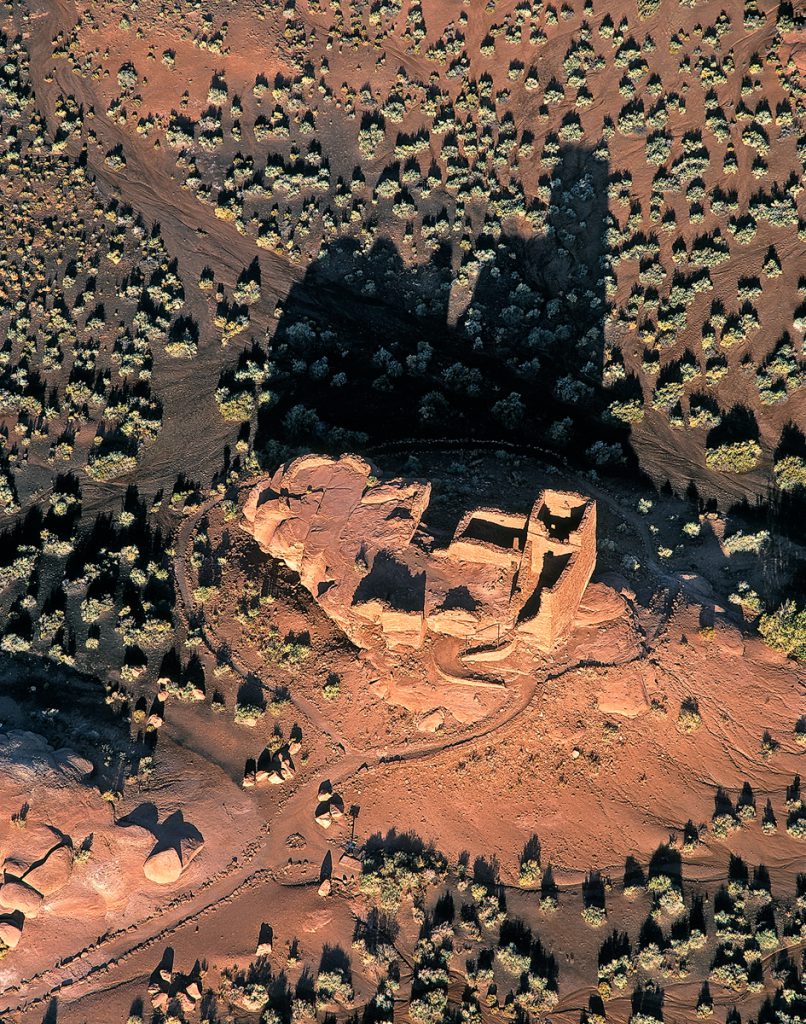
Pueblo Ruins on Small Mesa
Wupatki National Monument, Arizona, 1998 | 45 x 53.5 x 1.75 | $1,950
Pueblo ruins on a small mesa overlook the Little Colorado River valley in the northern reaches of Wupatki National Monument. Just north of Sunset Crater in northern Arizona, this region was inhabited between AD 1100 and 1250, probably by people displaced by the eruption of that volcano.
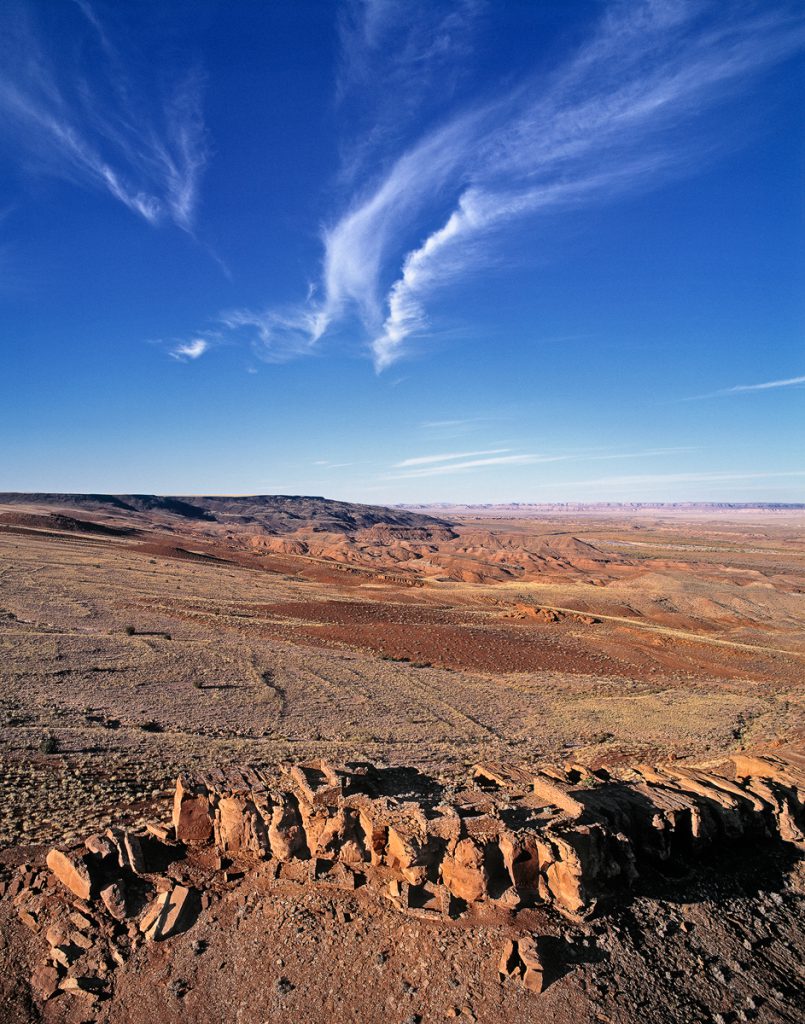
My heart said, go and see what you’ve acknowledged from your uncle. If you go and feel people have migrated, you will then know they migrated. When you are young you can be told all these things, but they have to be seen. Of course, I went with my cornmeal and prayed everywhere. I prayed for personal feelings. When all this was confirmed, I felt an eagerness to learn about Hopi culture more.
—Jim Tawyesva, Sr., Hopi elder describing the first time he sought to visit ancestral places.
Pueblo Villages on Narrow Mesa
Haano and Sitsom’ovi, First Mesa, Hopi Indian Reservation, Arizona, 1998 | 45 x 53.5 x 1.75 | $1,950
These two adjacent pueblos occupy the narrow space atop First Mesa. Haano, which is in the foreground, is a Tewa village founded by refugees from Rio Grande pueblos in the late 17th century. Sitsom’ovi, which is in the background, was founded in 1750 by people from nearby Wàlpi.
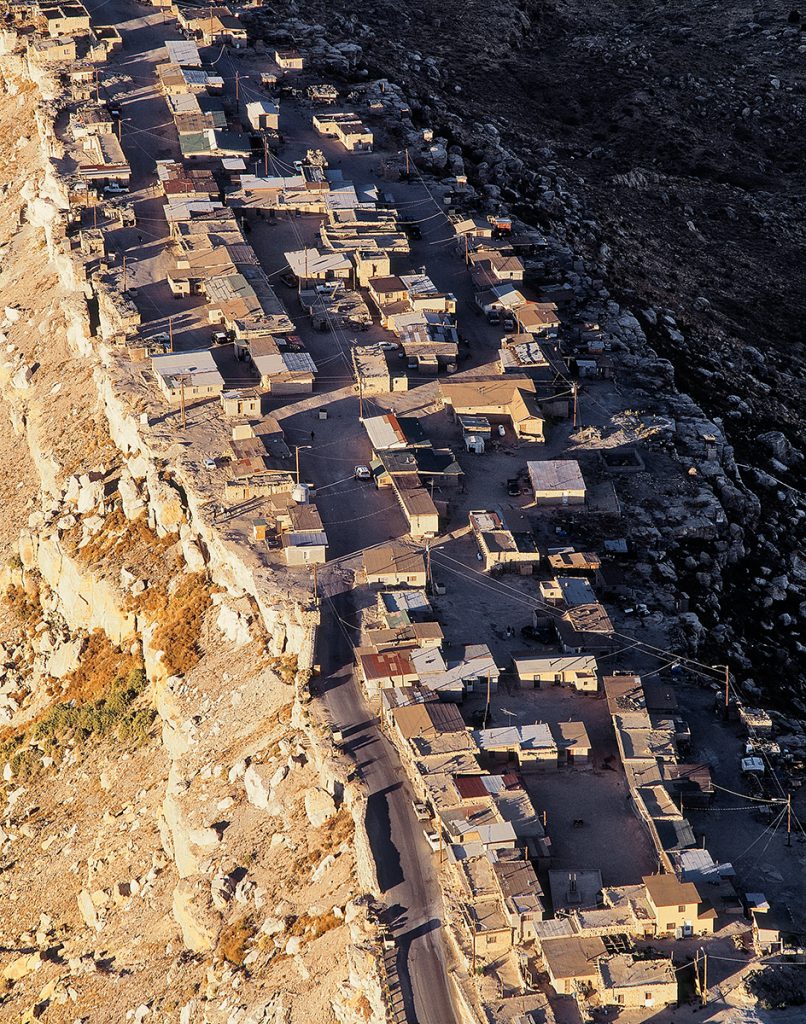
The footprints reaffirm oral and material traditions. The evidence confirms affiliation with Hopi today. People today can recognize the things in the past, and it becomes an unbroken continuity…Our interpretations are based on experience, not hypotheses, like archaeologists. That’s why this continuity is so important to us…It reaffirms ties to the land—it’s one element of our identity, who we are.
—Micah Loma’omvaya, ethnobotanist and Hopi advisor
Reconstructed Ballcourt in Sage
Wupatki National Monument, Arizona, 1997 | 33.5 x 39 x 0.875 | $975
Reconstructed prehistoric ballcourt at the Wupatki Pueblo in Wupatki National Monument, Arizona. This feature is similar to others found much farther south in the Hohokam area of southern Arizona, and may have been used ritually.
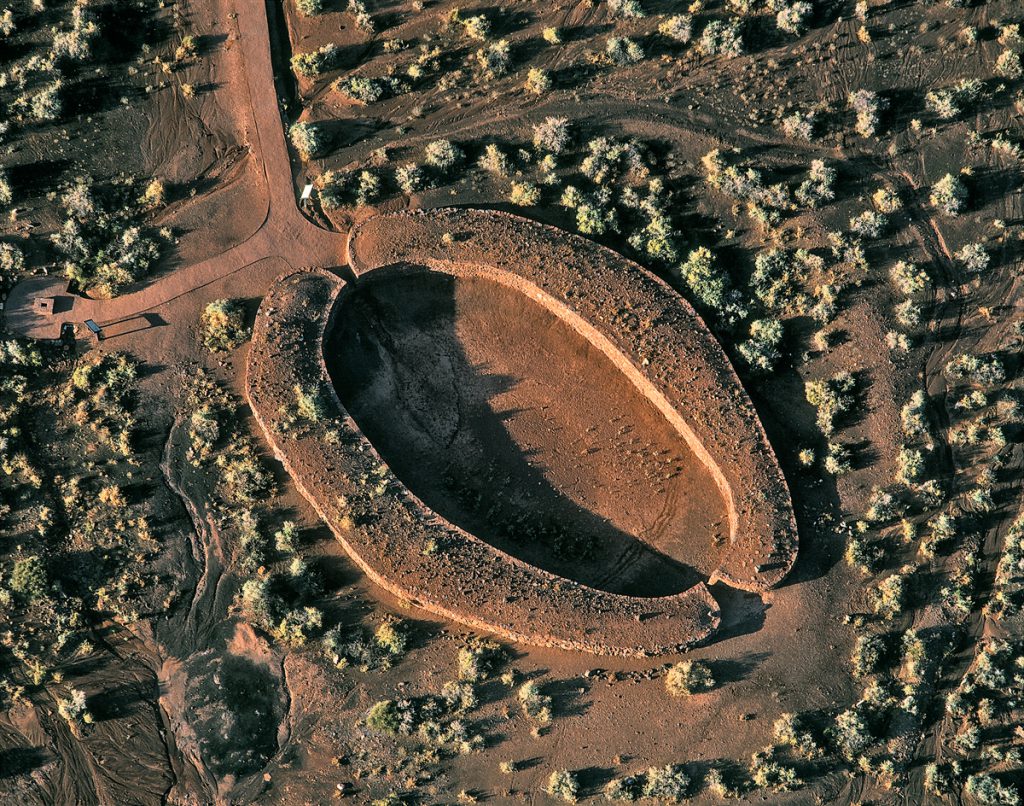
Ring on Mesa
Chinle Valley, Navajo Nation, Arizona, 1997 | 45 x 53.5 x 1.75 | $1,950
A circular feature sits atop an isolated mesa in the Chinle valley southwest of the community of Round Rock on the Navajo Nation in northeastern Arizona. In this steep oblique view to the west, Chinle Creek is visible along the top of the frame.
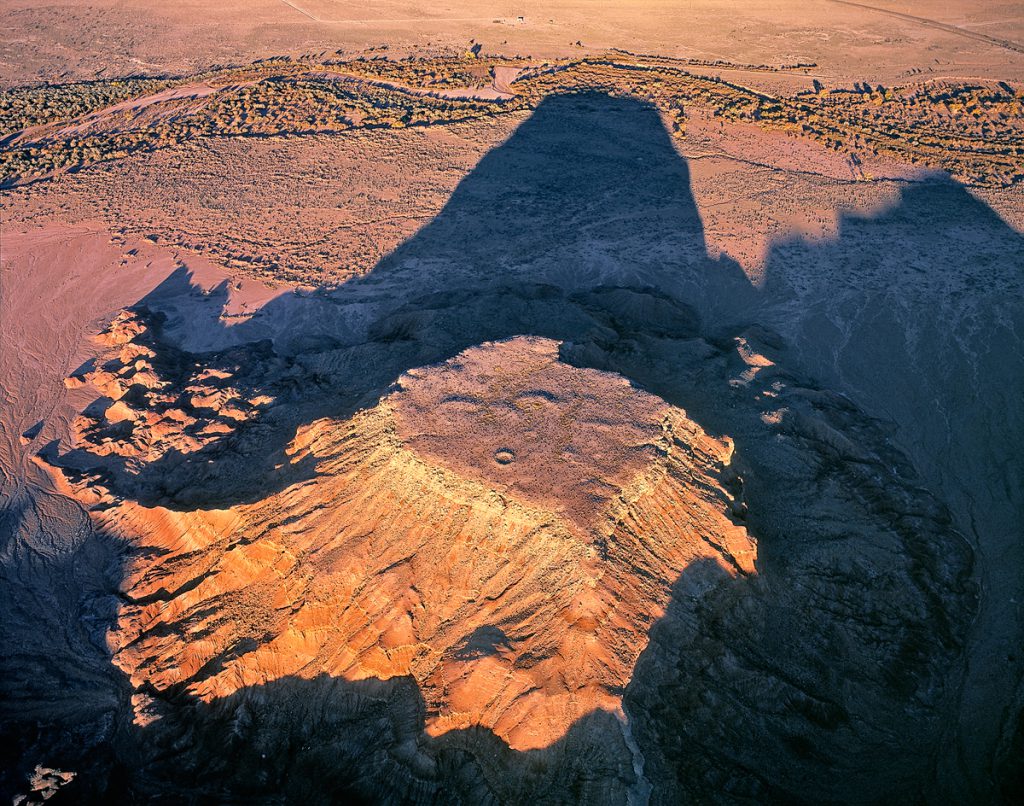
My own favorite way of experiencing cultural landscapes is to get some idea of what might be there—from maps, from reading—and then to just walk there, and walk, and walk, in ripples, trying to understand how people living there might have related to the hills, the springs, the arroyos, the amazing variety of this high desert ecology.
—Lucy R. Lippard, writer, art critic
Galisteo, New Mexico
Road through Sage
Ganado Mesa, Navajo Nation, Arizona | 30.5 x 39 x 0.875 | $975
A single-lane dirt track meanders through an unbroken sea of sage to a remote Navajo home site on Ganado Mesa, on the Navajo Nation in northeastern Arizona.
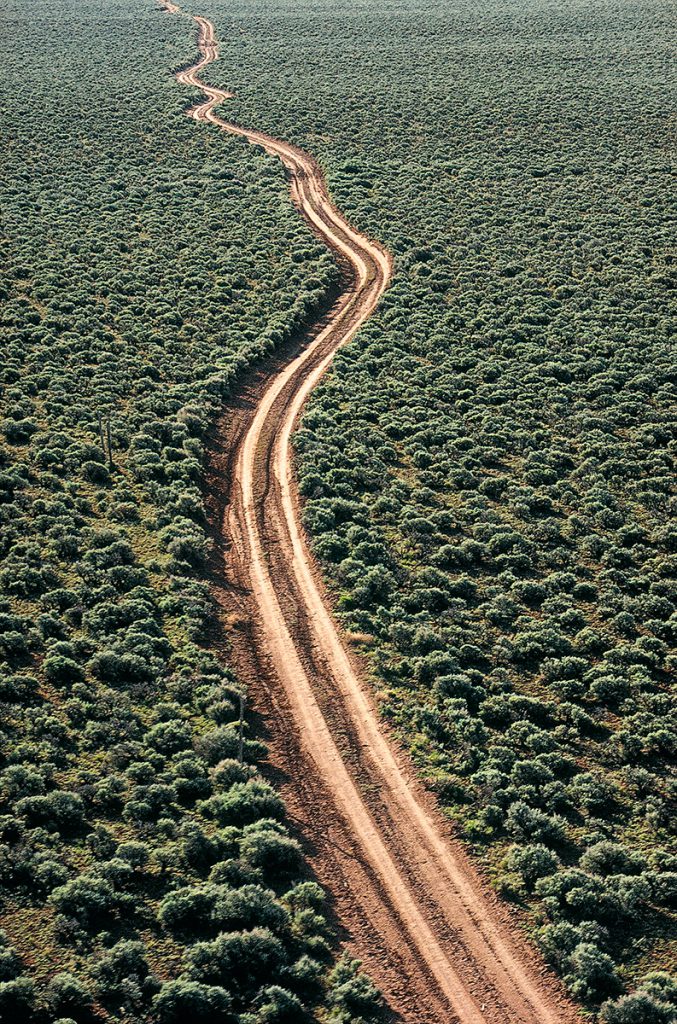
Villages on First Mesa
Wàlpi, Sitsom’ovi, and Haano, Hopi Indian Reservation, Arizona, 1998 | 55.5 x 65.5 x 1.75 | $2,800
Hopi villages perched on the narrow spine of First Mesa. At lower left is Wàlpi, with Sitsom’ovi and Haano at upper right center frame. View is to north toward Black Mesa.
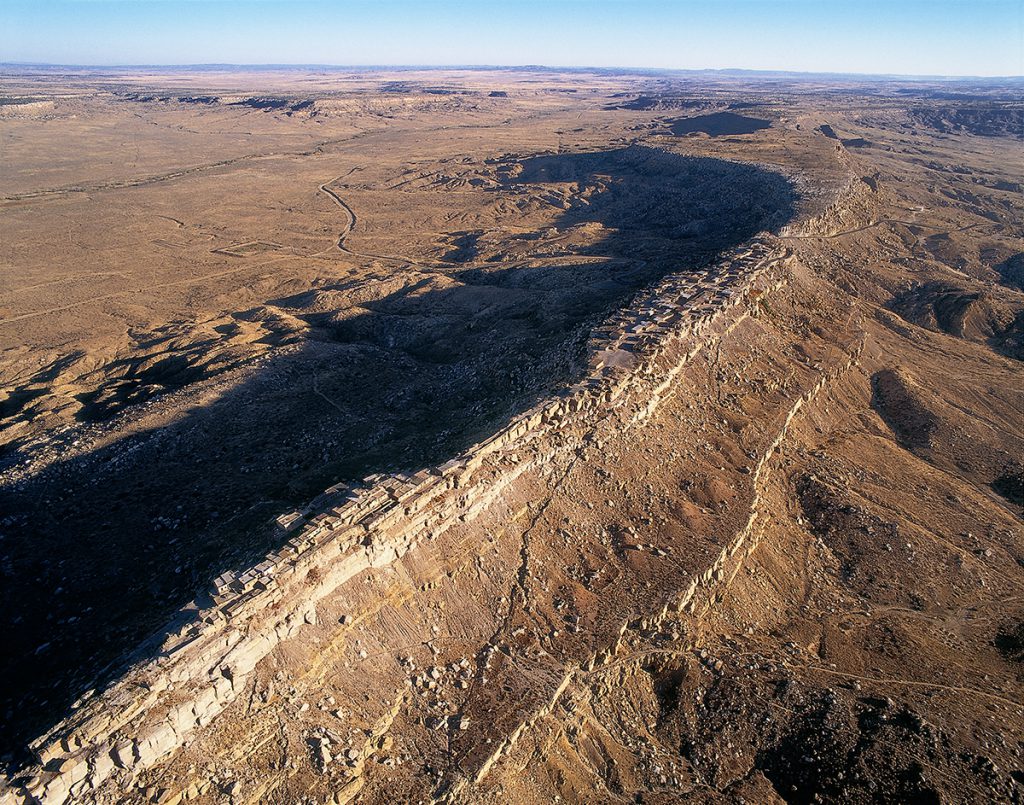
“I’ve been waiting for you. You put your feet on this land—it’s yours.” Màasaw gave it to the people and said, “If you want to live like me, this is what I’m giving to you. I will call you Hopi.” So the people took it and he gave it to them. Before the people had nothing, they were just naked. Màasaw said, “Look up there,” and up there was a mesa. “That is where you are going,” he said.
—Elden Kuwanyama, Hopi elder, recounting the beginning of his ancestors’ ancient migrations to the Hopi Mesas.